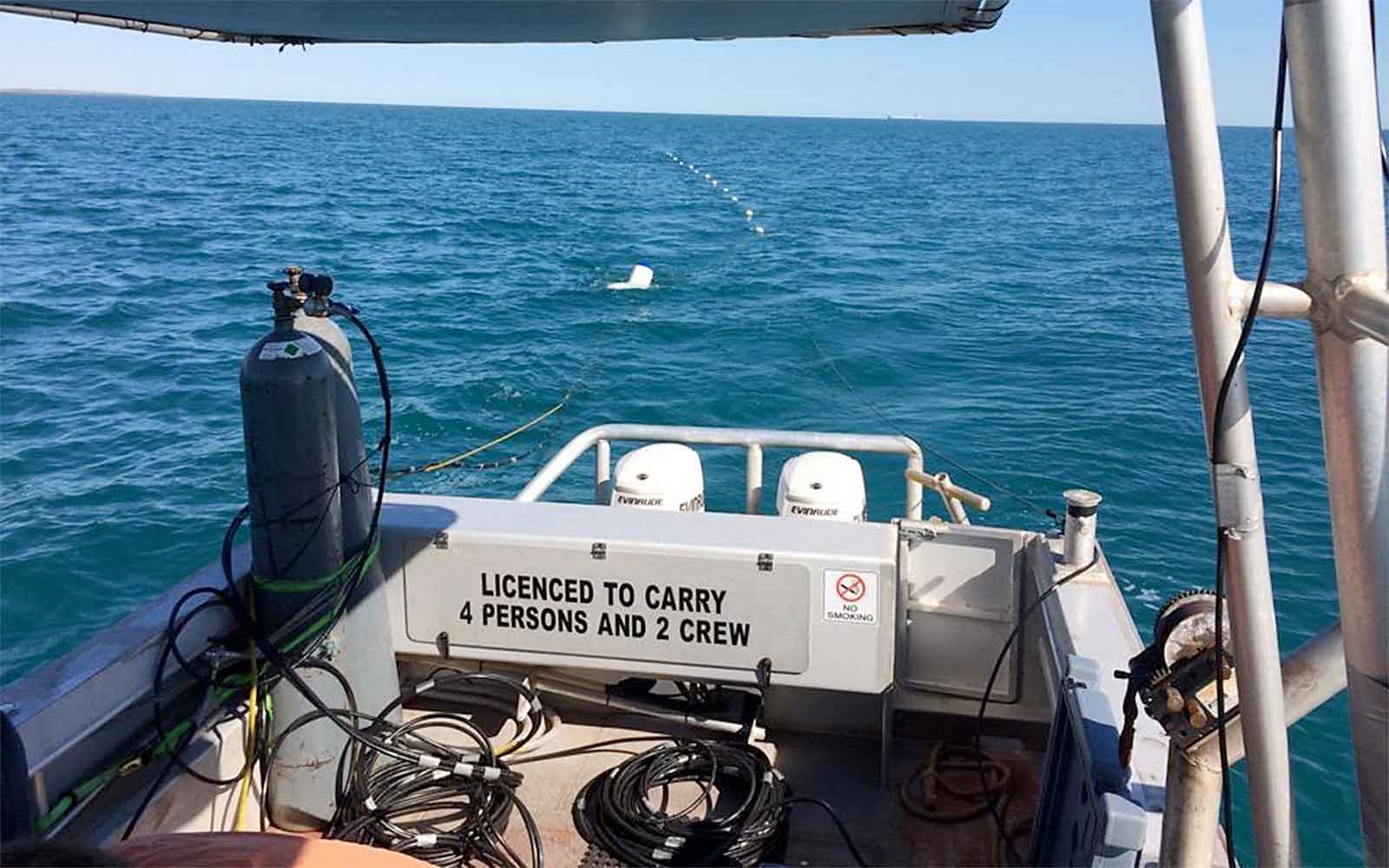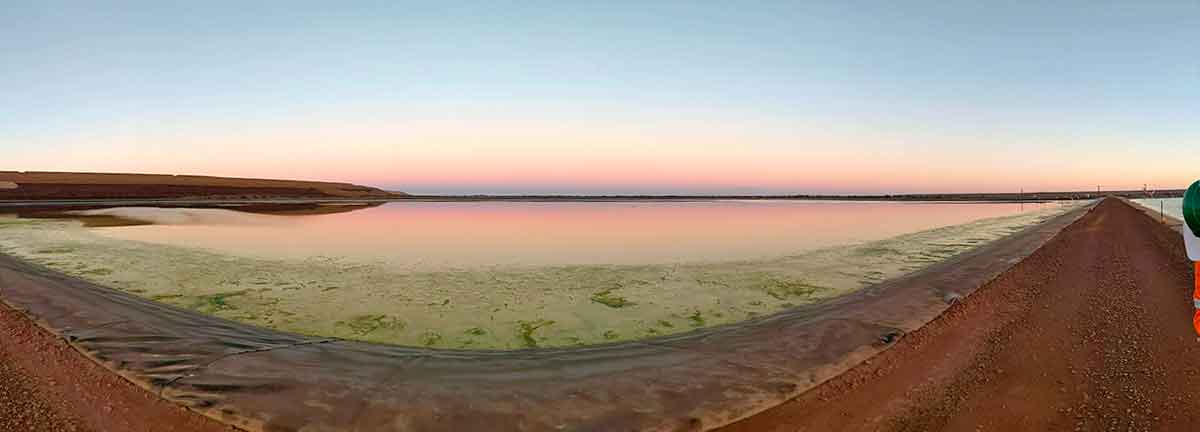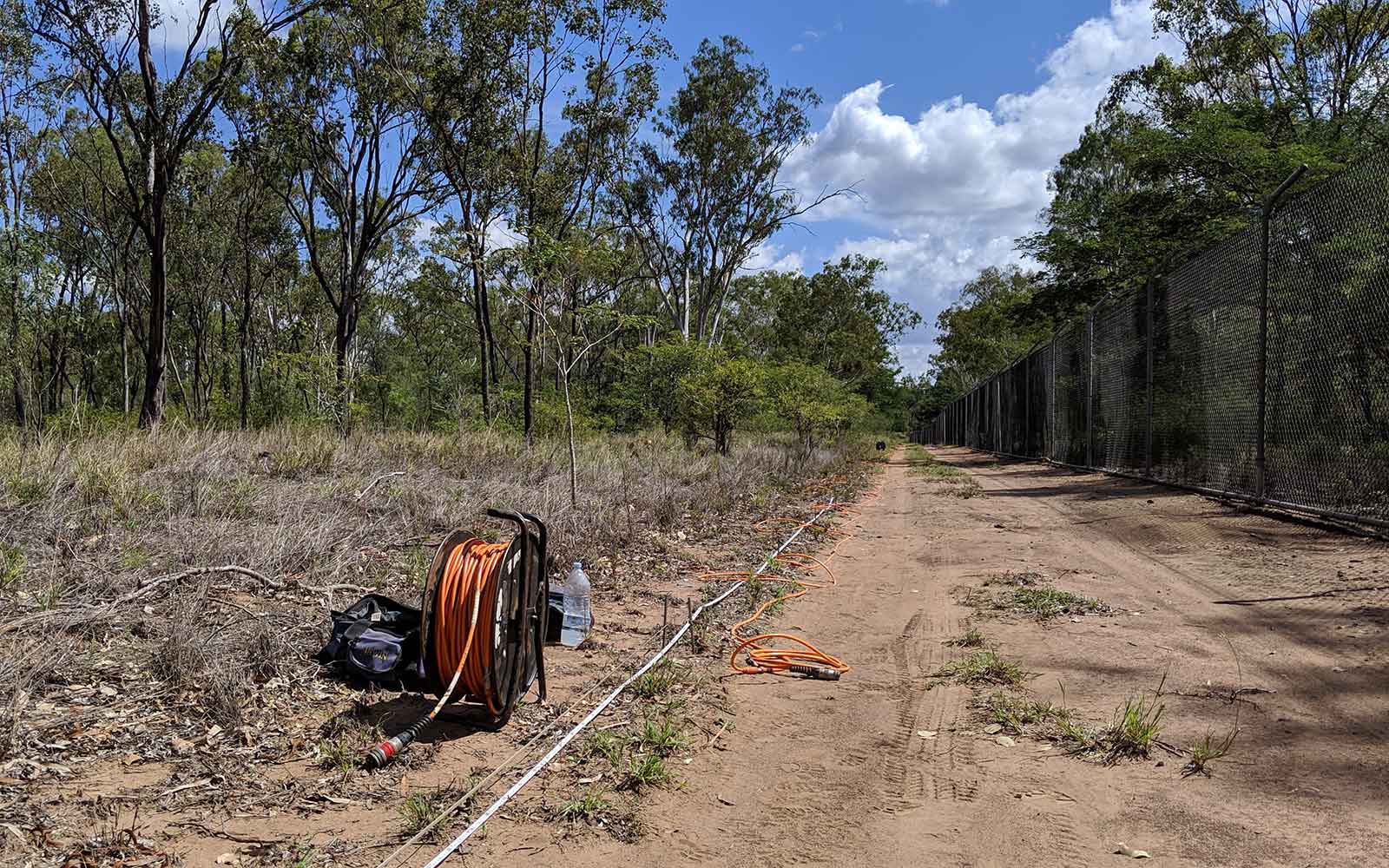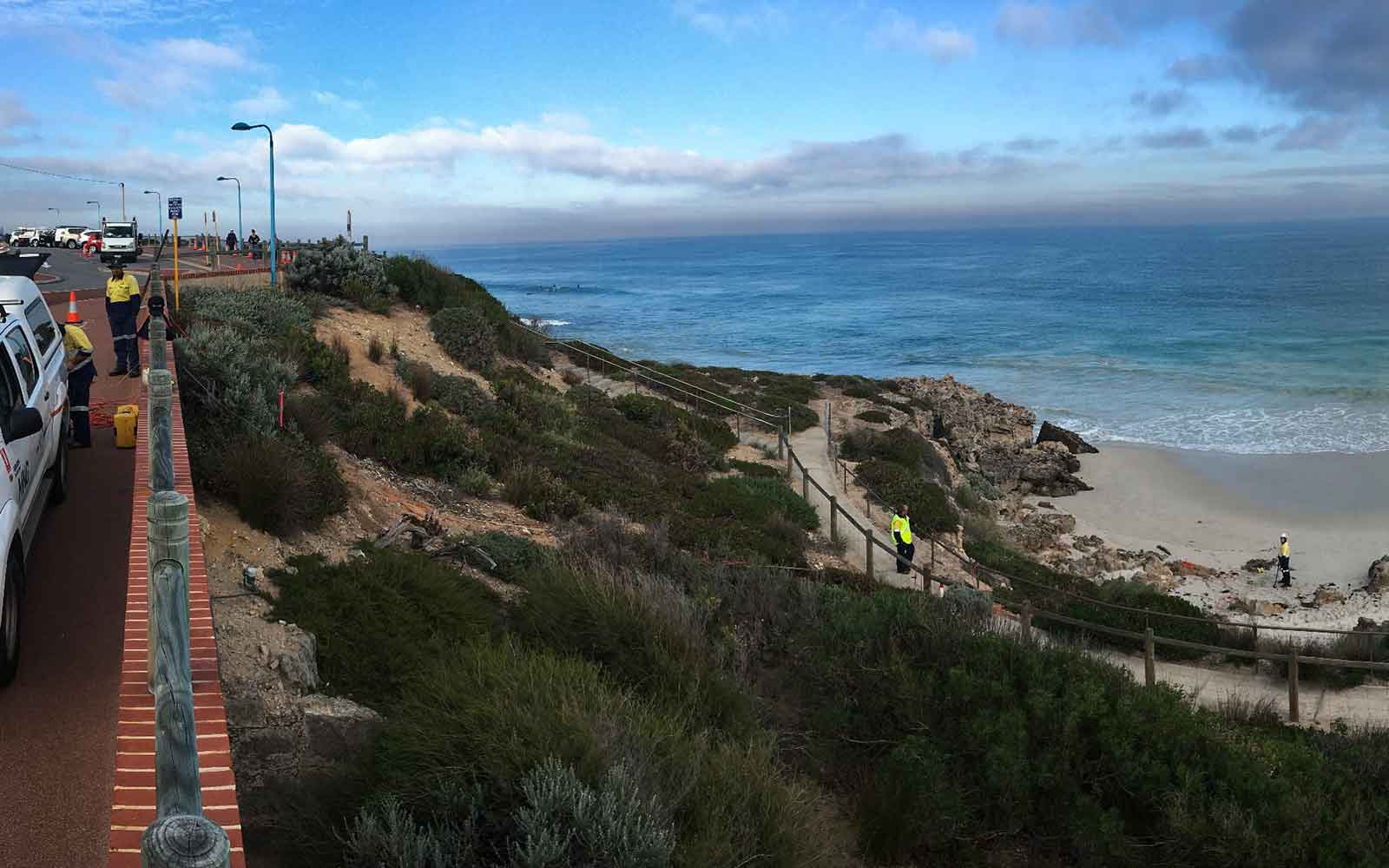Marine Seismic Refraction
Like standard land-based seismic involves the measurement of travel times of seismic compressional waves (P-waves) that are generated at the surface.

Applications
- Bedrock mapping
- Degree of sediment compaction
- Determination of geotechnical parameters (e.g. shear modulus)
- Void detection
- Liquefaction potential
- Subsurface profiling
- Imaging velocity inversions (hard layer overlying softer layer)
Method
The marine seismic refraction method, like standard land-based seismic involves the measurement of travel times of seismic compressional waves (P-waves) that are generated at the surface, propagate through the subsurface and return to the surface after being refracted at the interface between layers of contrasting seismic velocity. Seismic wave velocities are controlled by the fundamental parameters of elastic strength and density of the material it propagates through.
Seismic energy is typically generated within the water column by an airgun firing compressed air or nitrogen at very high pressure to create a signal. The generated seismic waves propagate through the water at a fixed velocity before penetrating the subseafloor subsurface at a certain velocity. On reaching a geological boundary marked by an increase in seismic velocity, at a specific angle the wave is critically refracted and travels along the top of the lower layer at a greater velocity. This generates head waves in the upper layer which return to the surface where it is detected as vibrations by a linear array of geophones spaced at regular intervals.
By measuring the travel times of these refracted waves from multiple source points to multiple receivers, the seismic refraction method can resolve lateral changes in the depth to the top of a refracting interface as well as the seismic velocity within it. Furthermore being related to elastic strength and density, the velocities calculated from a seismic refraction survey can be a useful guide to the dredgeability of sub-seafloor material.
Typically, the source and receiver array is towed near-surface and the water column is removed in post-processing. This allows for the rapid acquisition without risk of damaging the equipment or the seafloor. The source and receiver array may also be towed on the seafloor to improve the vertical resolution or placed on the seafloor for a static array however both bottom-placed methods involve some risk to equipment and seafloor features such as seagrasses.
Data Analysis & Presentation
Processing and analysing marine seismic refraction data can be carried out using a layered model assuming distinct refractive boundaries or tomographic approach assuming a gradual increase in seismic velocity with depth. Both approaches have benefits and are typically carried out in unison to generate the most detailed geological model possible.
The output is a cross-section showing lateral changes in the depth to the various refracting interfaces and the seismic velocities within them. When correlated with core logs, this information can be related to geological boundaries in the subsurface. This can be particularly useful for pile or dredge design.
Tailings Management: Get in touch
Consider a 'Tailings First' approach for your facility and avoid creating a potentially catastrophic risk for the environment.
GBG combines industry-proven geophysical methods, geotechnical physical characterisation, hydrogeological modeling and assessment, and airborne methods for point-based data capture in assessing your requirements. Talk to us today for more information regarding this essential service for your tailings facility.
Case Studies
GBG has completed over 1000 projects since its conception with multiple stakeholders and countless clients. GBG is proud to showcase some of these projects.
Enquire Now
We look forward to discussing your project with you, please complete the form below or contact one of our offices directly.
Please note: GBG Group is compliant with the General Data Protection Regulation (GDPR). To learn more about how we collect, keep, and process your private information in compliance with GDPR, please view our privacy policy. *









